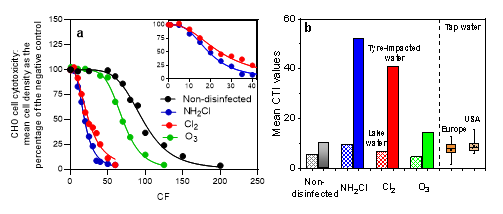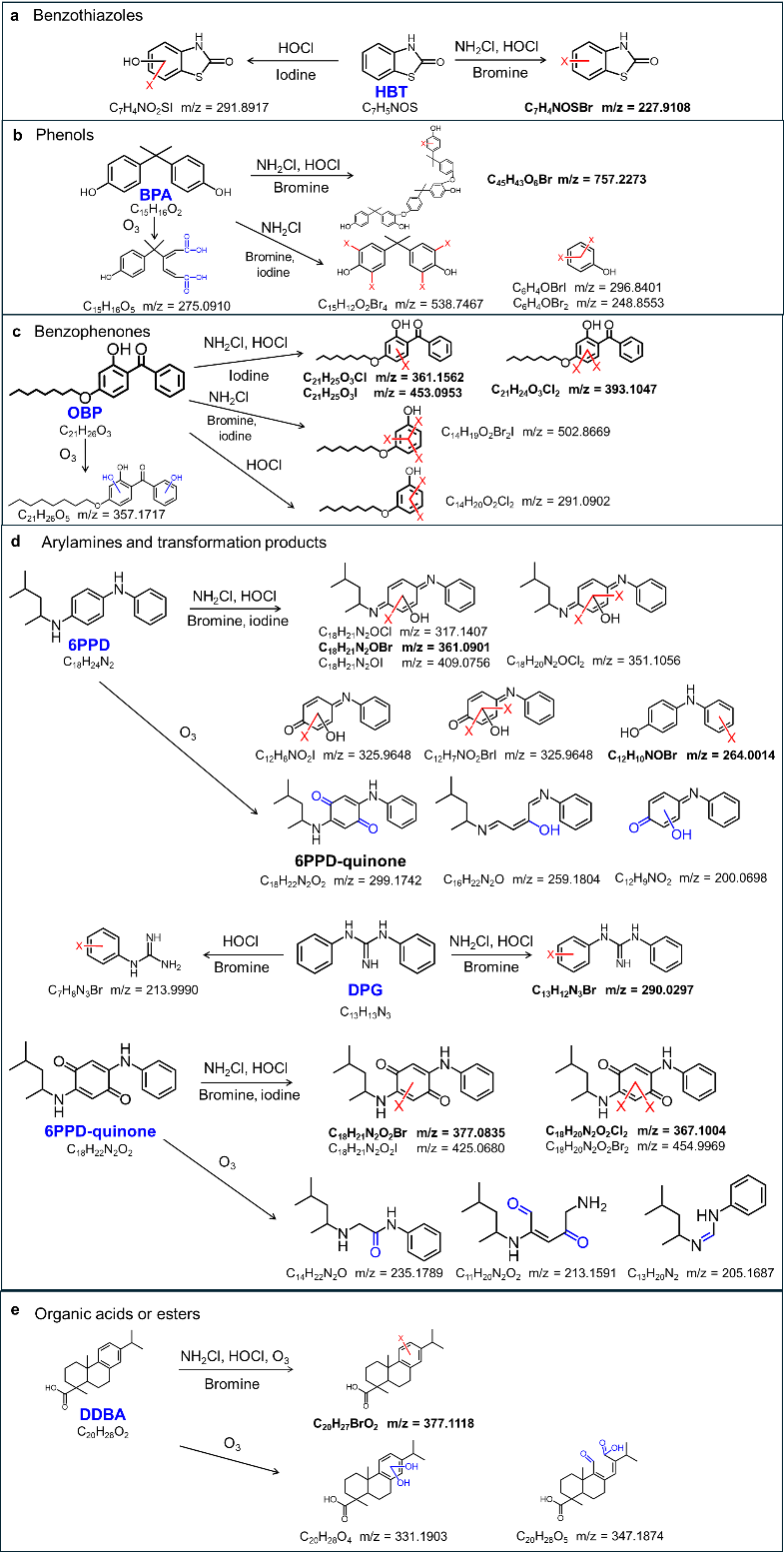
A team led by Prof. LIU Chao from the Research Center for Eco-Environmental Sciences of the Chinese Academy of Sciences has made a breakthrough in understanding how tyre-related chemicals amplify toxicity in water after disinfection, identifying key drivers of harm in a study published in Nature Water. The findings shed new light on a growing threat to aquatic ecosystems and water safety.
Tyre waste poses a significant environmental risk, with chemicals leaching from worn tyre particles or crumb rubber—used in construction and recreational projects—entering waterways via surface runoff. Yet until now, little was known about how water disinfection processes affect the toxicological impact of these tyre-derived substances.
To fill this gap, the researchers conducted cytotoxicity tests using Chinese hamster ovary cells, revealing that common disinfection methods sharply increase the toxicity of tyre-contaminated water. Chloramine disinfection boosted cytotoxicity by 4.0 times, chlorine by 3.0 times, and ozone by 0.4 times. Toxicity levels in disinfected, tyre-polluted water were 3.1 to 6.0 times higher than in disinfected samples of pristine lake water.
The study pinpointed a strong link between toxicity and halogenated byproducts—specifically brominated and iodinated compounds—formed when tyre additives react with disinfectants. Targeted chemical analyses identified 33 key additives in tyre-related chemical mixtures, including benzothiazoles, phenols, benzophenones, and arylamines. Though these additives made up less than 5% of total carbon mass in tyre-impacted water, they accounted for up to 36% of cytotoxicity in disinfected samples.
Back-of-the-envelope calculations, validated by experiments, underscored the scale of risk: surface runoff containing 500 mg/L of tyre particles, for example, increased water toxicity fivefold after disinfection.
With tyre particles accumulating in surface water and releasing chemicals continuously, their impact on water safety demands urgent attention, the researchers warned. Risks are particularly high in densely urbanized areas with small water networks and heavy rainfall, as well as during events that release concentrated tyre particles—such as tunnel washing or motorsports.
The research deepens understanding of how tyre particles alter the toxic profile of drinking water sources, emphasizing the need for targeted pretreatment measures and the development of eco-friendly tyre additives to mitigate risks.

Chinese hamster ovary cell cytotoxicity of non-disinfected and disinfected tyre-impacted waters. (Image by Prof. LIU Chao's group)

Tentatively identified transformation pathways of representative chemicals based on ultrahigh-performance liquid chromatograph coupled with quadrupole time-of-flight mass spectrometer analyses of tyre-impacted water. (Image by Prof. LIU Chao's group)

86-10-68597521 (day)
86-10-68597289 (night)

52 Sanlihe Rd., Xicheng District,
Beijing, China (100864)

